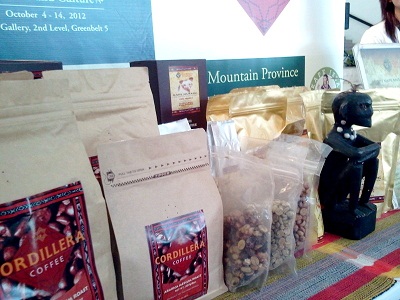By NORMAN SISON
 ON his first visit to the Philippines, the Belgian soil and management expert couldn’t believe at what he was seeing on a tour of coffee farms in the province of Cavite just last week. David D’haeze is used to trekking on mountain trails and rough roads to inspect coffee plantations in Vietnam, where he has been working for the past 14 years.
ON his first visit to the Philippines, the Belgian soil and management expert couldn’t believe at what he was seeing on a tour of coffee farms in the province of Cavite just last week. David D’haeze is used to trekking on mountain trails and rough roads to inspect coffee plantations in Vietnam, where he has been working for the past 14 years.
“We were really impressed that we were driving on a highway through the coffee fields – and very near the fields, there was a shopping mall,” D’haeze related, to the laughter from the audience at an annual coffee summit in Manila.
Cavite touts itself as the Philippines’ barako coffee epicenter, much to the chagrin of neighboring Batangas province. After all, the liberica variety made Batangas famous for barako coffee.
But Cavite might lose its title if urbanization continues its march. According to Philippine coffee champion Chit Juan, the province used to have 12,000 hectares of coffee plantations. It’s at 7,000 hectares now. Farmers are tempted to sell their land to developers, Juan said, because the land price is worth much more than what the farmer can earn in 20 years by planting coffee.
Vietnam had 2,000 hectares when the war ended there in 1975. It now has 500,000 hectares and produces over one million tons, making Vietnam the world’s second largest coffee exporter after Brazil – and no one has private ownership of the land.
In September, with D’haeze as their guide, Juan and other Coffee Board members toured Vietnam’s coffee fields and were astounded – as well as embarrassed – by what they saw.
“We visited one village in Vietnam, and that one village was producing the national production of the Philippines,” D’haeze told the audience at the 5th Philippine Coffee Summit, hosted annually by the Philippine Coffee Board, which has been championing Philippine coffee for the past 10 years.
D’haeze, the Asia Pacific regional manager for EDE Consulting, was invited by the Coffee Board to Manila last week to draw up a road map for Philippine coffee’s recovery.
The Philippines produces about 25,000 tons of coffee and the total national demand is at 100,000 tons, making it necessary for the country to import the deficit from Vietnam.
There D’haeze found another strange thing. “You maintained the 25,000 tons for the last ten years, which is amazing. Sorry for being a little sarcastic,” he said to the chuckles of the audience.
Taking a page from the Vietnamese experience, D’haeze found the Philippines has several competitive advantages when he outlined a recovery plan for the local coffee industry.
For one, thanks to the Philippines’ volcanic soil, the land is naturally rich in nutrients. That accounts for the Philippine coffee’s famed rich and strong flavor.
 Also, Vietnam can only produce the robusta variety because of the quality of the land it has. The Philippines grows all four varieties because of its varying terrain.
Also, Vietnam can only produce the robusta variety because of the quality of the land it has. The Philippines grows all four varieties because of its varying terrain.
D’haeze was mystified by the current Philippine coffee situation. “You can look at different markets aside from instant coffee but also specialty coffees. You can diversify your market much more than we can do in Vietnam. The question is: why don’t you make use of this potential?”
He suggested that coffee varieties used for specialty coffee – arabica, excelsa and liberica – be exported to fetch better prices even if the Philippines has a shortage.
The biggest incentive for the Philippine coffee’s recovery is an expected worldwide coffee shortage, projected to reach 32 million 60-kilogram bags by 2020, according to D’haeze, citing a study by the Hans Neumann Stiftung foundation. If climate change hits as predicted by experts by that year, Vietnam’s production is expected to slip if the dry months of January to April become drier and the monsoon more torrential.
That is an opportunity for Philippine coffee.
“I think we have to think together because it is not a country issue, but it is a global sector issue,” D’haeze said. “Roasters and traders are looking for a second Vietnam.”
He pointed to another advantage the Philippines has that complements Vietnam. “The Vietnamese are good on the production side, but there it stops. But I think what you guys are doing are magnificent because you are extremely good in the marketing of your products and the processing. So, I think we need to talk about synergies in the future, how we can bring the two elements together.”
While the summit was going on at the Asian Institute of Management, across the street at Greenbelt 5 shopping mall, shoppers and promenaders at a coffee festival savored various local coffee brands, grown from Benguet to Sulu. The Coffee Origins 2012 festival has been hosted by the Coffee Board for the past 10 years in celebration of Philippine Coffee Month.
Chit Juan was astounded by D’haeze’s analysis. “In one sitting, he has analyzed it,” she said, adding that it made much sense to study Vietnam instead of learning coffee farming from Brazil. “What better benchmark than an Asian country with conditions so close to ours.”
She noted the Philippines’ competitive advantages over Vietnam. “Our soil is richer. Theirs is more acidic, ours is not,” Juan said. “It took a white person to tell us how beautiful our country is.”